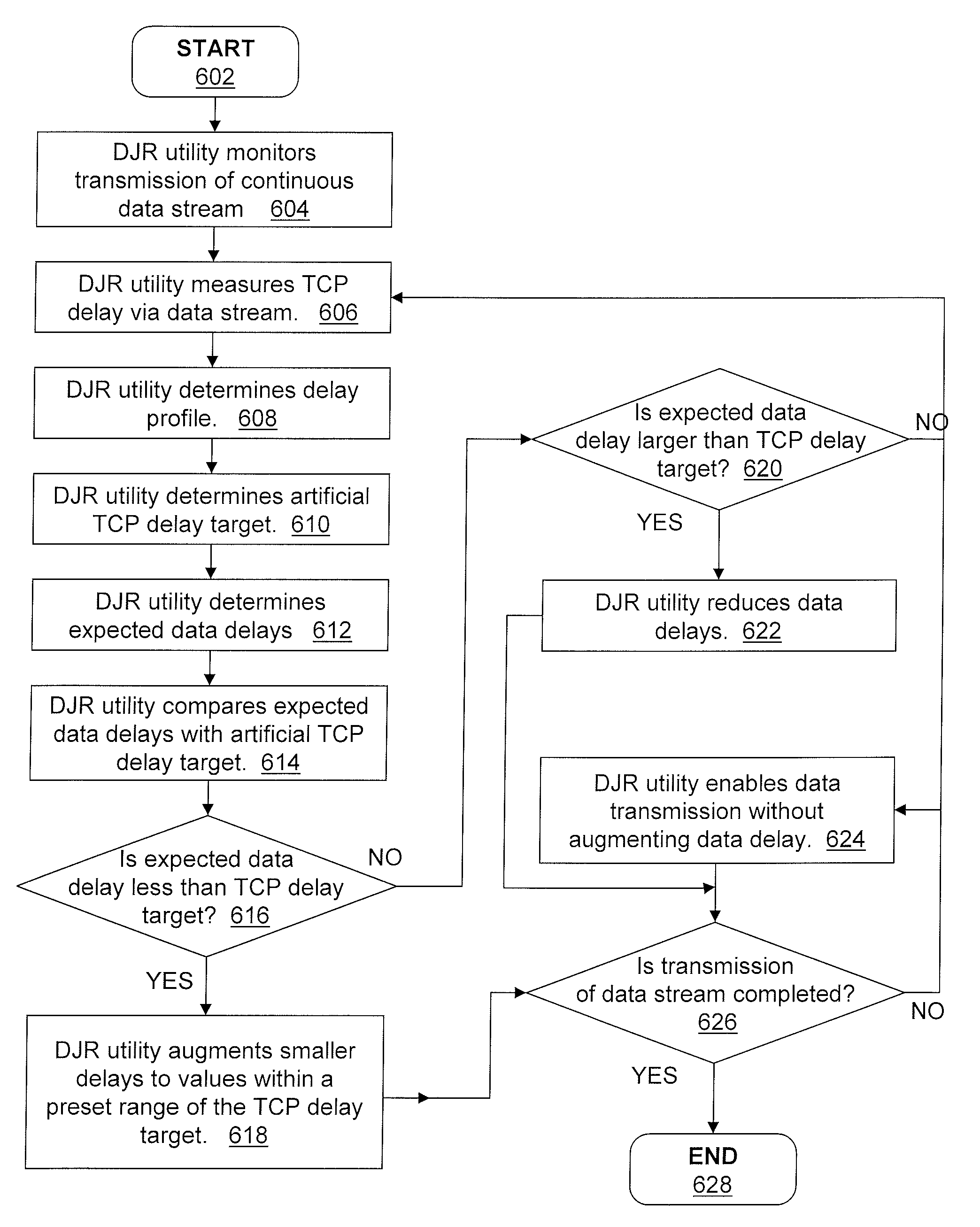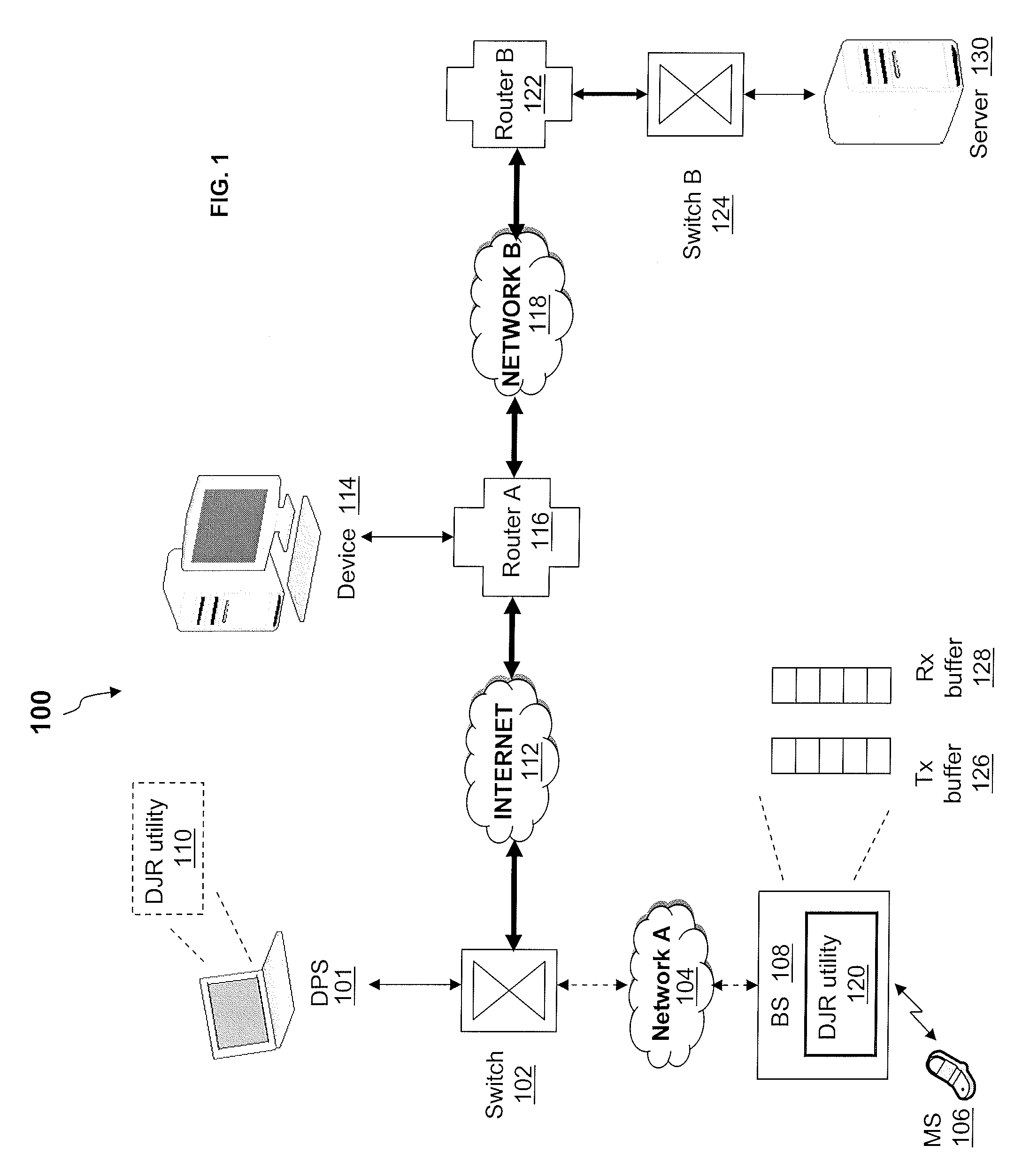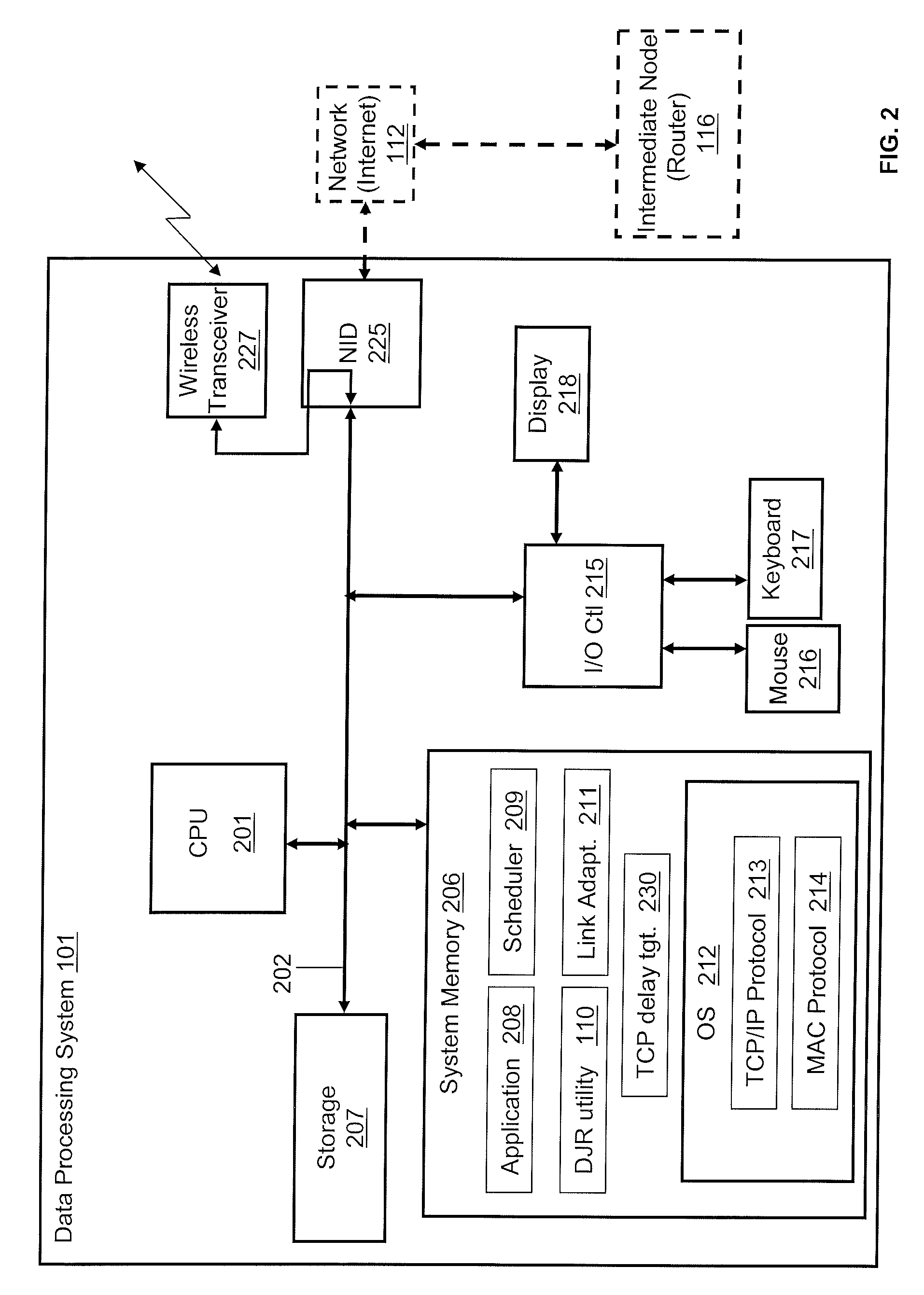Artificial delay inflation and jitter reduction to improve TCP throughputs
- Summary
- Abstract
- Description
- Claims
- Application Information
AI Technical Summary
Problems solved by technology
Method used
Image
Examples
Embodiment Construction
[0013]The illustrative embodiments provide a method, a network communication device and a base station for automatically determining delays of data transmitted via Transmission Control Protocol (TCP) and inflating these delays in order to reduce jitter and improve TCP throughput in a communications network. A Dynamic Jitter Reduction (DJR) logic / utility operating within a communications node measures delays on a rolling basis (i.e., via a continuous data stream with no delay inflation) in order to capture the delay profile. Based on the delay profile, the DJR utility determines a delay target. The DJR utility ‘inflates’ / augments future / expected delays toward the delay target based on one or more of the following: (a) using a delay based factor in a scheduler metric for TCP applications; (b) performing fine-tuning of link adaptation schemes; (c) delaying transmission of packets at a transmit or receive buffer; and (d) delaying transmission of a received TCP ACK signal from a media ac...
PUM
 Login to View More
Login to View More Abstract
Description
Claims
Application Information
 Login to View More
Login to View More - R&D Engineer
- R&D Manager
- IP Professional
- Industry Leading Data Capabilities
- Powerful AI technology
- Patent DNA Extraction
Browse by: Latest US Patents, China's latest patents, Technical Efficacy Thesaurus, Application Domain, Technology Topic, Popular Technical Reports.
© 2024 PatSnap. All rights reserved.Legal|Privacy policy|Modern Slavery Act Transparency Statement|Sitemap|About US| Contact US: help@patsnap.com










